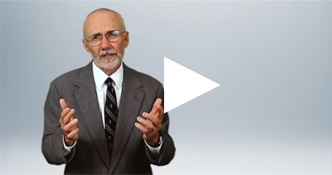Best Practices for Nonprofit Leadership Transition in the New Year
By Don Harkins
Senior Search Consultant
The Moran Company “We Find Great Nonprofit Executives”
In the lifeblood of every nonprofit, a key component of successful operations is having a strong framework in place to guide and support the organization in the event the organization might go through an unexpected leadership change in the next year. In the ideal world, a nonprofit has a long horizon for responding to any significant leadership change because the Executive Director\CEO and the Board have been discussing the topic for some period of time and are jointly planning for that eventuality, including having a timeframe that all parties have agreed to.
But it’s possible the Executive Director may choose to pursue another opportunity, their significant other may be transferred, they may discover that they or a family member have a significant health issue, or there may be an impasse that develops between the senior leader and the Board. These unforeseen circumstances create uncertainty in a nonprofit, may lead to the departure of critical Board members and/or staff personnel, and may increase the likelihood that mistakes will be made.
To help ensure the nonprofit is well prepared to handle such eventualities, it’s wise to confirm that the following “best practices” are happening regularly and have occurred at some point prior to the start of each new year:
Best Practices for Nonprofit Leadership Transition:
- Assuring that a well-thought-out succession plan is in place. It should delineate, among other things, the background needed by the Executive Director/CEO (including years of experience, education, additional training/certification/licensure, etc.), the essential skills required to be successful on the job, and the key responsibilities of the leader.
- Reviewing the strategic plan of the nonprofit. This will ensure the Board and senior staff are on the same page regarding the key priorities and how progress will be measured and reported.
- Reviewing the annual financial, communications, personnel, compliance and other plans of the nonprofit. This will guide key operational activities throughout the year to again assure that the Board and key staff are on the same page.
- Participating in ongoing discussions about how best to engage and “train” future leaders within the organization. Then they will be ready to assume additional responsibilities at the appropriate times.
Having this framework in place is extremely important for two reasons:
- It helps to jump-start the process for identifying and hiring the next Executive Director because careful thought has already been given to the attributes that the organization is seeking.
- It helps to ensure smooth operations during the transition and gives confidence to both Board and staff that the organization is well positioned to handle the leadership transition because the key planning (strategic and operational) has been carefully done and clearly communicated to the necessary constituents.
Because of the positive impact these “best practices” have in easing difficulties or problems associated with making leadership transitions, it is important that nonprofits make sure they have been addressed as an organizational priority from one year to the next. To learn more, read about our “9 Keys To Effective Nonprofit Executive Director Succession”. And if your organization needs assistance in finding that next great nonprofit leader, let The Moran Company be your “go-to” resource.
To learn more about how The Moran Company can assist your nonprofit with an upcoming executive search, simply contact us for a free 30-minute consultation for your organization.
Want more articles like this delivered directly to your in-box? Sign up for our E-Newsletter.
© 2018 The Moran Company, “We find great nonprofit executives.” We specialize in searches for nonprofit executive directors, directors of development/fundraising staff, and other top nonprofit leadership. www.morancompany.com
Posted in Executive Search Articles
Subscribe
Join more than 10,000 nonprofit professionals, community leaders and board members who receive e-mail updates from The Moran Company.






